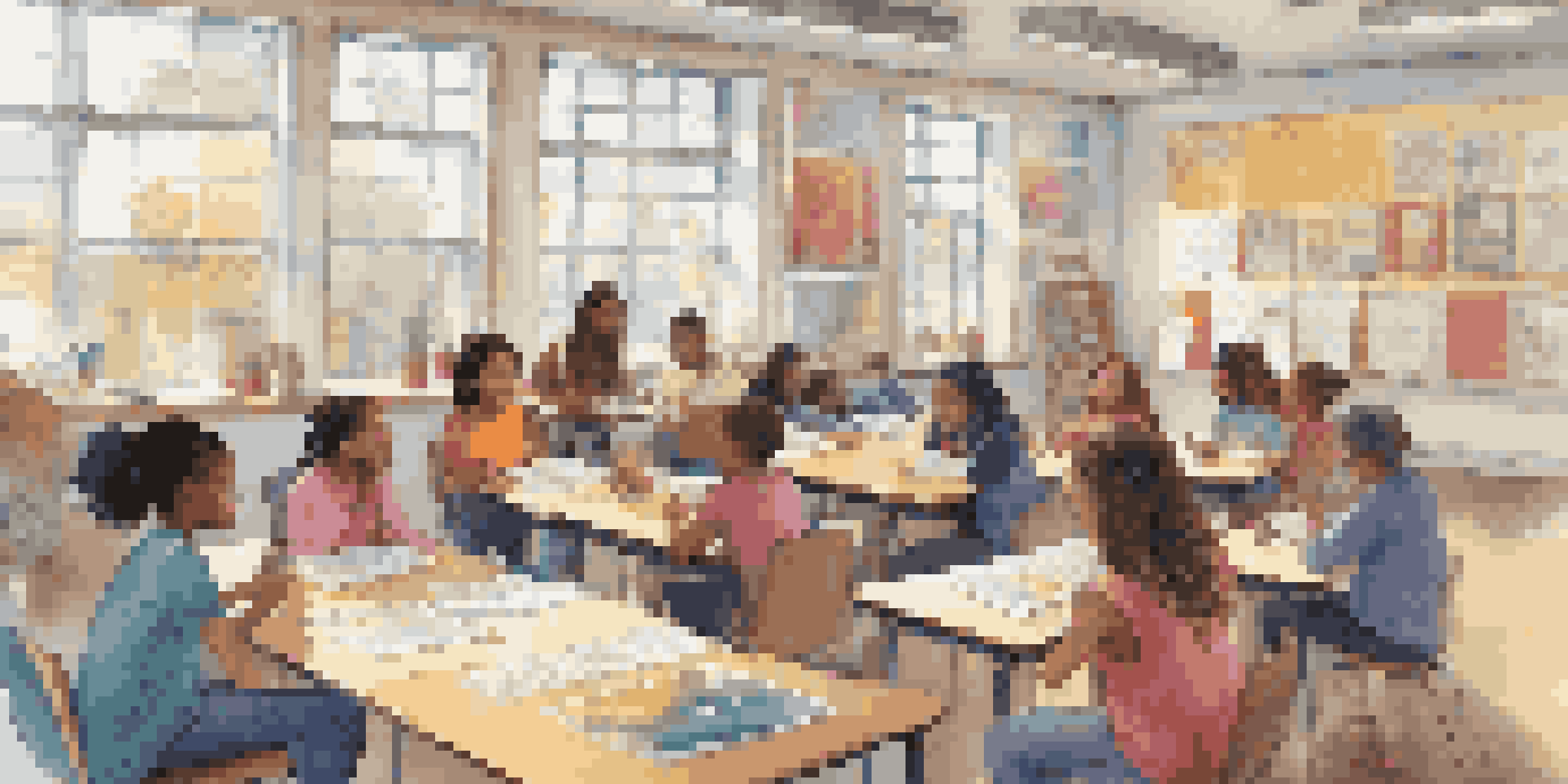Utilizing Narrative Techniques in Constructivist Learning Models

Understanding Constructivist Learning Models
Constructivist learning models are built on the idea that learners construct knowledge through experiences and reflections. Unlike traditional methods that emphasize rote memorization, these models encourage active participation and critical thinking. For example, when students engage in hands-on projects, they tend to grasp concepts more deeply, as they relate theory to practice. This approach fosters a more personalized learning journey, making education more relevant and engaging for each student.
The Role of Narrative Techniques in Learning
Narrative techniques involve storytelling elements that can make learning more engaging. By weaving stories into lessons, educators can create emotional connections that enhance retention and understanding. For instance, using a character's journey to illustrate scientific concepts can transform dry information into a relatable experience. This not only captivates students' attention but also encourages them to think critically about the material presented.
How Stories Foster Critical Thinking Skills
When students analyze narratives, they develop critical thinking skills that are essential for problem-solving. Stories often present dilemmas or conflicts that require thoughtful resolution, prompting learners to explore various perspectives. For example, discussing a character’s choices in a story can lead to rich discussions about ethics and decision-making. This process encourages students to question assumptions and engage in deeper analysis.
Creating a Collaborative Learning Environment
Narratives can also promote collaboration among students, as they often work together to unravel stories. This collaborative approach fosters a sense of community and encourages peer-to-peer learning. For instance, group storytelling activities can help students share their interpretations and insights, enriching the overall learning experience. By working together, they not only enhance their understanding but also build valuable social skills.
Engaging Diverse Learners Through Stories
One of the strengths of using narratives in education is their ability to engage diverse learners. Stories can be tailored to reflect different cultures, experiences, and perspectives, making learning more inclusive. For example, incorporating folk tales or personal narratives allows students from various backgrounds to see themselves in the material. This representation fosters a sense of belonging and encourages all learners to participate actively.
Designing Effective Narrative-Based Learning Activities
To effectively integrate narrative techniques into constructivist learning, educators should design engaging activities. This could involve creating interactive storytelling sessions where students contribute to the narrative. Additionally, using multimedia tools, such as videos or podcasts, can enhance the storytelling experience, making it more dynamic. These activities should encourage creativity and allow students to express their understanding in various formats.
Assessing Learning Outcomes Through Narratives
Assessing the impact of narrative techniques can be challenging but rewarding. Educators can evaluate students’ understanding through reflective essays, presentations, or creative projects that stem from the narratives. For instance, asking students to create their own stories based on what they've learned can reveal their grasp of the material. This assessment not only measures learning outcomes but also encourages students to engage more deeply with the content.
Future Trends in Narrative and Constructivist Learning
As education continues to evolve, the integration of technology and storytelling is likely to expand. Virtual reality and interactive platforms can create immersive narrative experiences that enhance constructivist learning. For example, students might explore historical events through interactive storytelling, bringing lessons to life in unprecedented ways. This blend of narrative techniques and technology will undoubtedly shape the future of education, making learning even more engaging and effective.